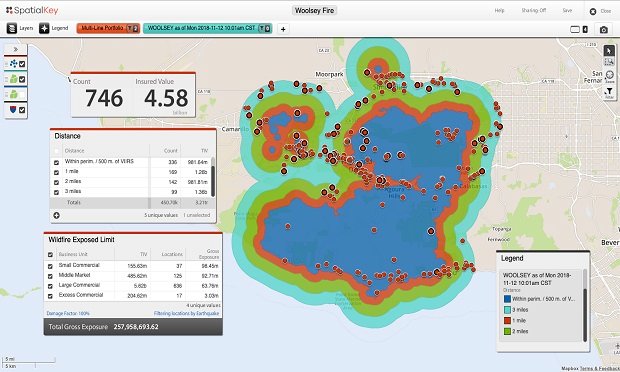Compare your data project to cleaning out the attic. It can be adirty and dusty endeavor, but once it's done and everything isclean and sorted you discover some of the items that were buried inthe corner are not only useful, but valuable possessions.
|Unfortunately for the insurance industry, taking on a dataproject can take quite a bit longer than cleaning out the attic orthe basement. Too often, it can be overwhelming. Insurers, instead,just listen to the complaints about the data.
|"All companies complain about their data," said Deb Smallwood,founder of the research and advisory firm SMA, Strategy Meets Action. "Butwhen you look at the list of projects they have planned, very fewof them are data projects."
Qasim Hussain, senior architect for the technology consultinggroup X by 2, agreesthat everybody blames data. "Data is never good enough," he says."IT can go in and fix the data, but often the business is stillunsatisfied with the quality of the data."
|Hussain also believes that once the data is of a certain age,fixing it is almost impossible.
|"It was captured at a point in time by a system, and there is noway to fix the data without interacting with an external entity toget the data cleaned," he says.
|For example, Hussain works with a health insurer, and when theywent back six years into the data they found many names wereincorrect or misspelled.
|"There's no way to go back and figure if this is the rightperson unless you call that person," he says. "You try to fix it ifcertain attributes match. You can try to use some intelligence toclean up the data, but [the carrier] has to accept the fact you arenot going to get the data 100 percent correct."
|That means carriers need to decide upfront the level of qualitythey can call "good enough" to move forward, according toHussain.
|"You can't reach perfection, but can business and IT negotiate,given the state of systems, whether 90 percent is good enough? 95percent?" he asks. "Can we move forward that way? There will besome margin of error in the analytical platform. Historical data iswhat it is. You can try some resolution, but there is no way it isgoing to be perfect."
||Exceptions to the Rule
|The insurance clients Hussain works with for X by 2 arestruggling to get data in a way they can do better analytics andgain some business intelligence off the data.
|"The concept of data mastery is you really need to come up witha consolidated way of thinking about the data across theenterprise," he says.
|Desjardins General Insurance Group is an exception to the rule.The company has been revamping its business intelligence solutionfor the last few years. Sonia Sevo, vice president of the businessintelligence competency center at Desjardins, explains the carrieralways looks to its data before making business decisions.
|Desjardins did a diagnostic check on its systems in 2008, whichreinforced the view that the insurer's systems were built on agingtechnology and not very scalable.
|"It was difficult to meet the current business demands andrequirements as they were evolving," Sevo says. "Our need forinformation on our customers evolves very quickly if you want tokeep up with the competition. What we had wasn't allowing us tomeet those requirements and establish a competitive advantagewithin our industry."
|Such projects are not as common as they should be, though.
|"The majority of the industry hasn't grasped the concept thatdata is a business process," said Smallwood. "It's a constantproblem. You can't clean it and think it will always remain thatway."
|Think Big, Act Small
|Sevo claims the competition is fierce among direct insurers inthe Quebec, Canada market where Desjardins operates. The carrierneeded to take a bold step.
|"We felt rebuilding what we currently had wasn't going to work,"she says.
|Desjardins, also a direct carrier, instead decided to moveforward.
|"We wanted to learn from all the different trials and errorsthat have been happening in the last 10 years in [businessintelligence]," says Sevo. "It can be a complete success or acomplete failure, and it's a very fine line between the two."
|Desjardins chose the Insurance Insight solution from Oracle,partly because much of the design work that's required whenbuilding a data warehouse or a BI environment was alreadycompleted.
|"You have to have the 'think big, do small' approach," she says."That's easier said than done when you are establishing a newenvironment with data as complex as it is in the insuranceindustry."
|With the vertical solution from Oracle, Sevo believes the "thinkbig" approach was already completed. "There is some customizationbecause our requirements are particular, but [Oracle] allowed us tocut up our projects and deliver important information and data toour business users in a timely fashion and improve our time tomarket," she says.
|The approach allowed Desjardins to begin implementing its datagovernance process, ensuring data quality and consistency acrossthe organization.
|"It comes with definitions that are standard within theinsurance industry," says Sevo of the new system. "It allows us tomove forward quickly because we're not starting from a blank page.It's a model based on projects that have been done across theindustry, giving us a good idea on what exists already. Thecomparisons have already been done."
||Data Questions
|Smallwood believes data cleansing projects involve fivesteps:
|o Accuracy–Is all the data being collected free from errors?
|o Complete–Is all the required data being collected?
|o Consistency–Is the data captured and stored in a standardformat?
|o Relevance–Is all the right data being captured?
|o Timeliness–Is the data available in time to provide maximumvalue?
|"The best insurance companies understand that strategy is veryimportant," says Smallwood. "At the same time, they recognize, inthe end, company results are determined by the sum of all theindividual transactions, interactions and decisions they makethroughout each day and over the course of months and years.Embedded in their IT systems and in the minds of their employees isa simple, yet extremely important data philosophy: Do it right withaccurate and rich information."
|Smallwood believes the poor quality of data residing within aninsurance carrier's systems is a major barrier to progress for thecarrier.
|Data that is erroneous, incomplete, inconsistent, out of date,and disparate, she explains, creates a peril for insurers and makesit difficult to gain insight into the problems faced by thebusiness side. Even worse, poor-quality data may result in lostbusiness, increased costs, and even fines for lack ofcompliance.
|Size Matters
|Where Hussain has seen success in data projects is with smallerinsurance carriers where the complexity of the data was not aslarge.
|"The reward these carriers receive is they are able tounderstand more about how to improve operations and change businesspractices to meet the needs of their constituents or to targetmarkets they thought they were targeting effectively, but wheredata shows there's a low conversion rate for policies they want tosell," he says.
|Small carriers don't always take advantage of the toolsavailable, either.
|"It takes time, skill and automation," says Smallwood. "Thereare a lot of tools available to clean data," she adds, noting that"small companies tend to do it manually, though."
|Smallwood understands not all insurers are created equal. Thetop tier of insurers likely has fulltime data teams. "There isalways activity to clean and prepare the data," she says.
|Typically, larger insurers may have several departments come upwith their own definition of what constitutes a certain policy, acertain number, and what constitutes a certain contract, explainsHussain.
|"Getting all of them to agree on one definition and to buildthat definition to construct some analytics on it is a difficulttask," he concedes.
|Unfortunately, Hussain hasn't seen as many successes with largerinsurers. He notes that two clients currently are in the process ofundertaking data projects.
|"They are trying to get some small targeted structure built sothey can answer some immediate questions, and that in itself canlead to some small successes, so when you build the structure forthe long term you have people who have seen the value," hesays.
|"At the highest level of leadership there seems to be a feelingthat it would be great to have [better data] and they are pushingfor it, but when you get to the actual people who are going to use[the data], I've seen resistance," he warns.
|Whatever the approach, Smallwood is certain of one thing: "Youhave to keep chipping away at it."
||Legacy Issues
|Another area that hurts many insurers is their systems typicallyaren't designed to master the data in a way to use it foranalytical purposes.
|Hussain recounts visits with clients that are using systemsbuilt in the 1970s and 1980s and have yet to migrate to the latestpolicy administration, membership management or customerrelationship management systems.
|"There is a lot of legacy out there, and those systems werebuilt with a certain design and certain constraints in mind," saysHussain. "You have to build those concepts in before you can tieeverything together and come up with a consolidated view. In legacysystems, data is generally not in a convenient form to use."
|Project managers have to be aware there are no quick-hitsuccesses that you can achieve early from a data project.
|"You need large volumes of data in a consolidated way before youcan start doing any analytics on the systems," says Hussain. "Youcan't build that in two or three months. The enterprise commitmentto follow through [on the data project] needs to be there."
|Taking Responsibility
|Hussain finds the business side usually leads the way on dataprojects, but he believes insurers need a special mix of businesspeople with an IT mindset, because those who want to do analyticsand need a lot of intelligence about their business are not typicalbusiness people.
|"You need people who know what types of questions will be askedof the system and the best way and form to ask them," he says.
|"Questions are hard to articulate in a requirements document, soyou need someone who can understand the technology and say: 'If youbuild this type of a platform it will be to answer these types ofquestions.' You need a good business partner and a strong ITpartner coming together and understanding how to grow the platformso it will serve the analytical needs of the business."
|The Full Power
|Smallwood maintains proven tools and processes are available forinsurers to improve the quality of their data, enhance its value,and turn data into a carrier's most valuable asset.
|"Unleashing the full power of insurance data should be on theshort list for every insurer," says Smallwood. "It is doable today.The tools are available and not difficult to use. The path to highquality and rich data is not hard to define, and the goal is withinreach for most insurers. The investment is one that brings quickreward and keeps on giving." TD
Want to continue reading?
Become a Free PropertyCasualty360 Digital Reader
Your access to unlimited PropertyCasualty360 content isn’t changing.
Once you are an ALM digital member, you’ll receive:
- All PropertyCasualty360.com news coverage, best practices, and in-depth analysis.
- Educational webcasts, resources from industry leaders, and informative newsletters.
- Other award-winning websites including BenefitsPRO.com and ThinkAdvisor.com.
Already have an account? Sign In
© 2024 ALM Global, LLC, All Rights Reserved. Request academic re-use from www.copyright.com. All other uses, submit a request to [email protected]. For more information visit Asset & Logo Licensing.








